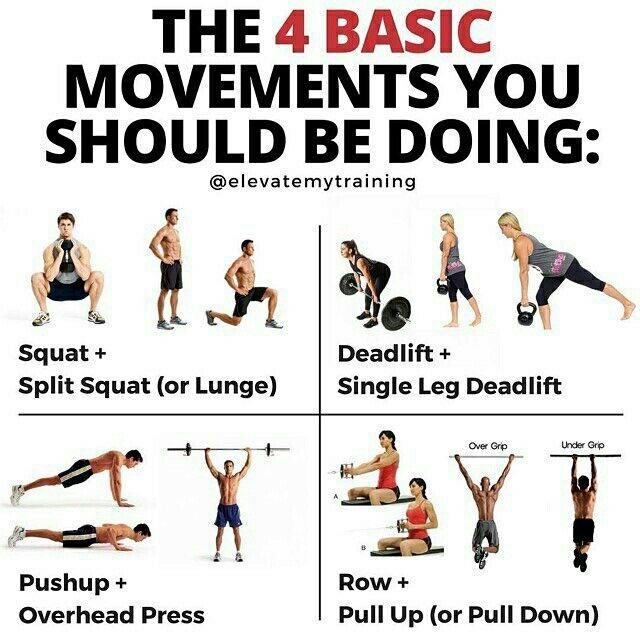
It can be embarrassing to see people do stupid things while using fitness equipment. Many people use incorrect form while lifting weights. Even the most experienced of gym goers can make these errors. Even minor mistakes can cause big problems during your workout. This is why it is so important to practice proper form and technique. These mistakes can be avoided.
Do not lift too much in the gym. This is a common mistake made by men. This can be attributed to their inflated sense of capability or an ego. A desire to impress women could also be the reason. It's a good idea start with lighter weights, and gradually increase your lifting. This will improve the training process and help to prevent injuries that can result in time loss.

Beginners should not skip the warm-up. The warm-up can hinder progress and cause injury. A warm-up can increase your body temperature, improve blood circulation, heart rate, as well as relax your muscles, joints, and muscles. If you skip the warm-up, you risk causing joint pains, which can last for a long time. This can be prevented by making a list of common gym mistakes and noting them.
A common mistake is not taking enough rest between sets. Most people make this error when lifting weights. They don't get five to ten minutes of rest between sets or exercises. They won't be able complete a set, and they will have trouble maintaining proper form. You won't be able fully to recover if you don’t give your body enough rest between sets. When you exercise, injuries are inevitable. Take the time to practice correct form.
A beginner's biggest mistake in the gym? Using the wrong technique. This is one the most common errors in a fitness center. Avoid these common mistakes if you're a beginner. If you don't know what to do, don’t be afraid to ask a professional for help. You can avoid injury by learning the proper technique from a professional. This will ensure your workouts are safe, effective and safe. If you do it correctly you will see better results.

A fitness professional is recommended if you are looking to lose weight. A fitness professional will consider your health and devise a workout plan that suits you. A good personal coach will give you structured plans to help you lose more weight and increase your exercise. It's important to know what type of exercises you need to perform to get the desired result. In addition, a gym trainer will be able to guide you in a way that is safe and effective.
FAQ
How does an antibiotic work?
Antibiotics are drugs which destroy harmful bacteria. Antibiotics are used to treat bacterial infections. There are many options for antibiotics. Some can be taken orally while others are injected. Others are topically applied.
Many people who have been exposed can be prescribed antibiotics. For example, if someone has had chicken pox, he or she might take an oral antibiotic to prevent shingles later on. An injection of penicillin may be necessary to prevent pneumonia if someone has strep.
Children should not be given antibiotics without the consent of a doctor. Children are at greater risk of developing side effects from antibiotics than adults.
Diarrhea being the most common side effect of antibiotics. Other possible side effects include stomach cramps, nausea, vomiting, allergic reactions, headaches, dizziness, and rashes. These symptoms generally disappear once the treatment has finished.
What are 5 ways to live a healthy lifestyle?
Healthy living means eating right, exercising regularly and getting enough sleep. It also involves managing stress and having fun. Eating well means avoiding processed foods, sugar, and unhealthy fats. Exercise can help you burn calories and strengthen your muscles. You can improve your memory and concentration by getting enough sleep. Stress management reduces anxiety, depression and other symptoms. Fun is key to staying young and vibrant.
Is cold a sign of a weak immune response?
Cold makes you weaker because you have less white blood cells to fight infection. Cold can also make you feel better as your body releases endorphins to your brain, which reduce pain.
Increase immunity with herbs or supplements
Herbs and natural remedies can be used to boost immune function. There are many natural remedies that can boost immunity, including echinacea (oregano), ginger, ginkgo biloba and vitamin C.
These herbal remedies should not be used in place of conventional medical treatment. Side effects include nausea, diarrhea and stomach cramps, headaches and dizziness.
How to measure body weight?
A Body Fat Analyzer will give you the most accurate measurement of body fat. These devices are used to measure body fat for people who want weight loss.
What is the difference between a virus and a bacterium?
A virus is a microscopic organism which cannot reproduce outside of its host cell. A bacterium can be described as a single-celled organism which reproduces by splitting in two. Viruses are small, around 20 nanometers in size. Bacteria are much larger, at 1 micron.
Viruses are usually spread through contact with infected bodily fluids, including saliva, urine, semen, vaginal secretions, pus, and feces. Bacteria is usually spread directly from surfaces or objects contaminated with bacteria.
Viral infections can also be introduced to our bodies by a variety of cuts, scrapes or bites. They can also enter the body through the mouth, nose, eyes and ears, vaginal, rectum or anus.
Bacteria can be introduced to our bodies by cuts, scrapes or burns. They can also enter our bodies from food, water, soil, dust, and animals.
Viruses and bacteria both cause illness. But viruses do not have the ability to multiply within their hosts. They can only infect living cells and cause illness.
Bacteria can grow in their hosts and cause disease. They can invade other areas of the body. That's why we need antibiotics to kill them.
Statistics
- In both adults and children, the intake of free sugars should be reduced to less than 10% of total energy intake. (who.int)
- According to the 2020 Dietary Guidelines for Americans, a balanced diet high in fruits and vegetables, lean protein, low-fat dairy and whole grains is needed for optimal energy. (mayoclinichealthsystem.org)
- nutrients.[17]X Research sourceWhole grains to try include: 100% whole wheat pasta and bread, brown rice, whole grain oats, farro, millet, quinoa, and barley. (wikihow.com)
- WHO recommends consuming less than 5% of total energy intake for additional health benefits. (who.int)
External Links
How To
What does the "vitamins” word mean?
Vitamins are organic substances found naturally in food. Vitamins are necessary for us to absorb nutrients in the foods we consume. Vitamins cannot be made by the body; they must be taken from food.
There are two types vitamins: water soluble or fat soluble. Water soluble vitamins dissolve easily in water. Some examples include vitamin C,B1 and B2 vitamins (thiamine), B2 and riboflavin, B3 and B6 vitamins (niacin), folic acids, biotin, pantothenic acids, and cholesterol. Fat-soluble vitamins are stored in the liver, fatty tissue and kidneys. You can find vitamin D, E K, A, beta carotene, and other fat-soluble vitamins.
Vitamins are classified according their biological activity. There are eight major groups of vitamins:
-
A – Essential for normal growth, and the maintenance of good health.
-
C - vital for proper nerve function, and energy production.
-
D - essential for healthy bones, teeth, and gums.
-
E - Required for good vision & reproduction
-
K - Required for healthy nerves and muscles.
-
P – vital for building strong bones.
-
Q - aids digestion and absorption of iron.
-
R - Red blood cells are made from red blood cells.
The recommended daily intake (RDA), of vitamins varies with age, gender and physical condition. The U.S. Food and Drug Administration, (FDA), sets the RDA value.
For adults over 19, the RDA for vitaminA is 400 micrograms per daily. Because it is essential for the development of the fetus, pregnant women should consume 600 micrograms per daily. Children ages 1-8 require 900 micrograms per day. Children under 1 year old require 700 micrograms daily, while infants over one year old need 500 micrograms every day. This decreases between 9 and 12 months.
Children aged between 1-18 years require 800 micrograms of sugar per day, while overweight children need 1000 micrograms. Children who are underweight receive 1200 micrograms every day to meet their nutritional requirements.
Children between 4 and 8 years old with anemia will need 2200 micrograms daily of vitamin C.
2000 micrograms are required daily for good health in adults over 50. Because of their higher nutrient needs, women who are pregnant or nursing need 3000 mg per day.
1500 micrograms is the recommended daily intake for adults aged 70+, who lose approximately 10% of muscle each year.
Women who are pregnant, nursing or breastfeeding need more than the RDA. Pregnant and breastfeeding women require 4000 micrograms each day during pregnancy and 2500 Micrograms each day after delivery. Breastfeeding mothers need 5000 mg per day when breastmilk is being produced.